In pictures: World War One anniversary
- Published
Ceremonies have been held across the UK and in Belgium to mark 100 years since Britain joined World War One.

A service was held at Westminster Abbey, in London, where a light installation called Spectra beamed a column of white light into the sky while a candle-lit prayer vigil was held inside.
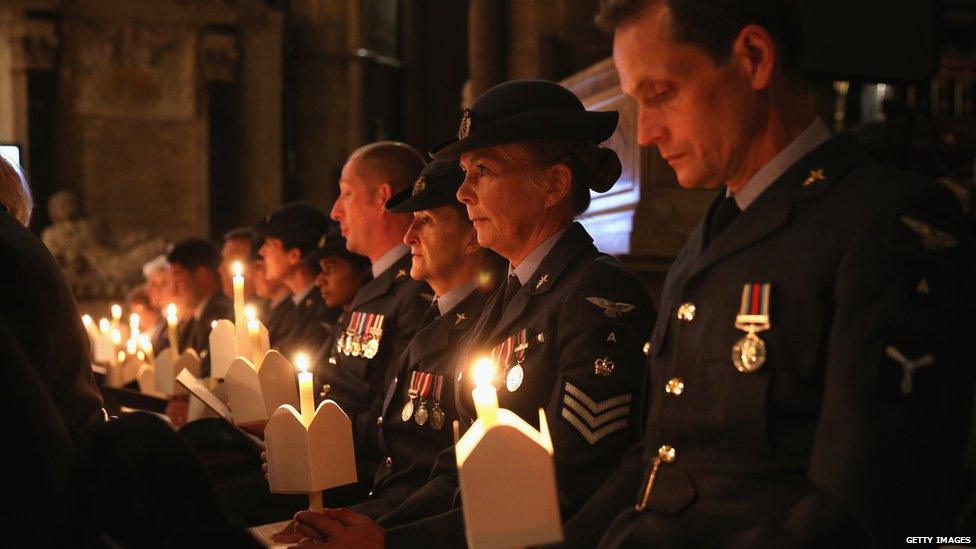
The service of solemn commemoration was attended by the Duchess of Cornwall, where members of the congregation held candles.
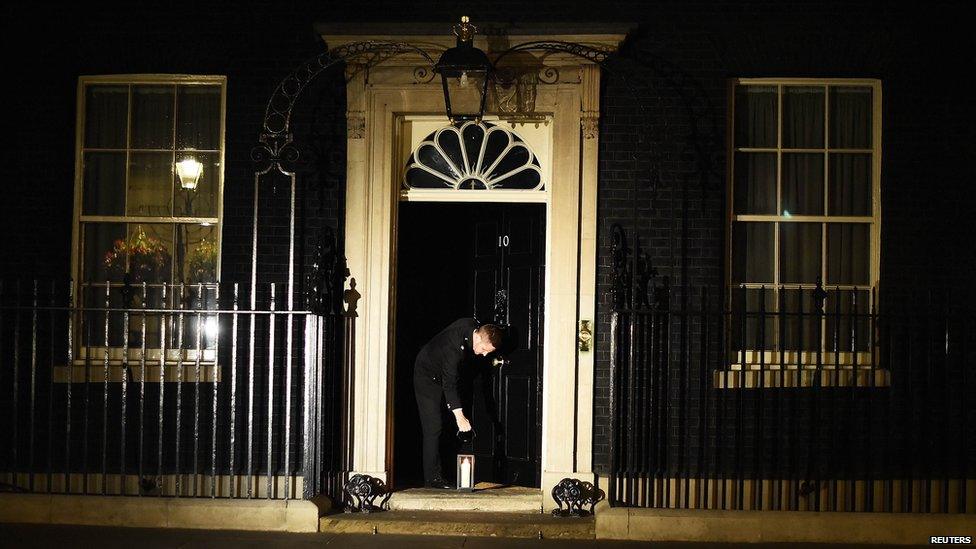
Across the country lights were switched off and candles were lit, in churches and places of worship, public buildings and homes among other premises, including outside Number 10 Downing Street.

The lights were switched off at the Houses of Parliament, as part of the UK-wide "Lights Out" event recalling then-foreign secretary Sir Edward Grey's remark on the eve of the outbreak of war: "The lamps are going out all over Europe; we shall not see them lit again in our lifetime."
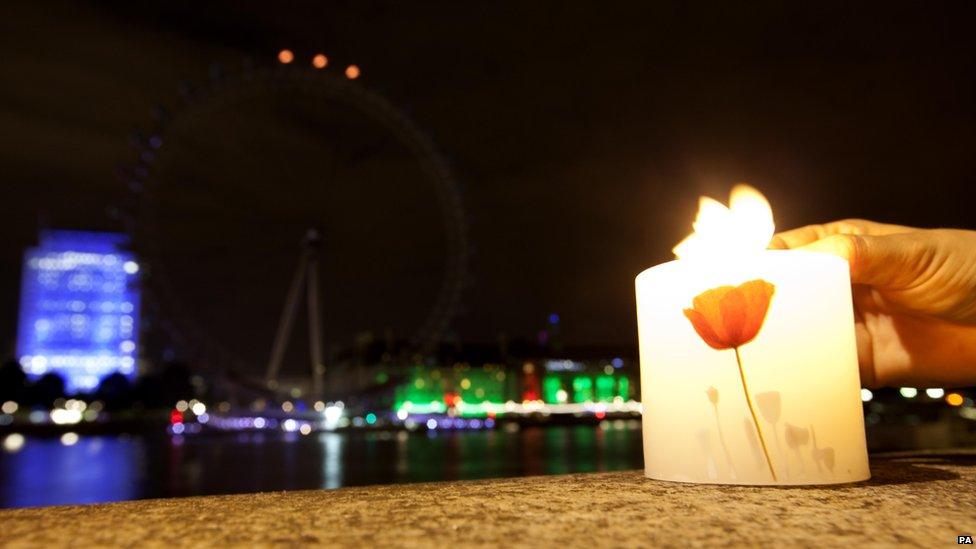
Candles were lit across the UK to mark the centenary, while the London Eye, in London's South Bank, was plunged into darkness.
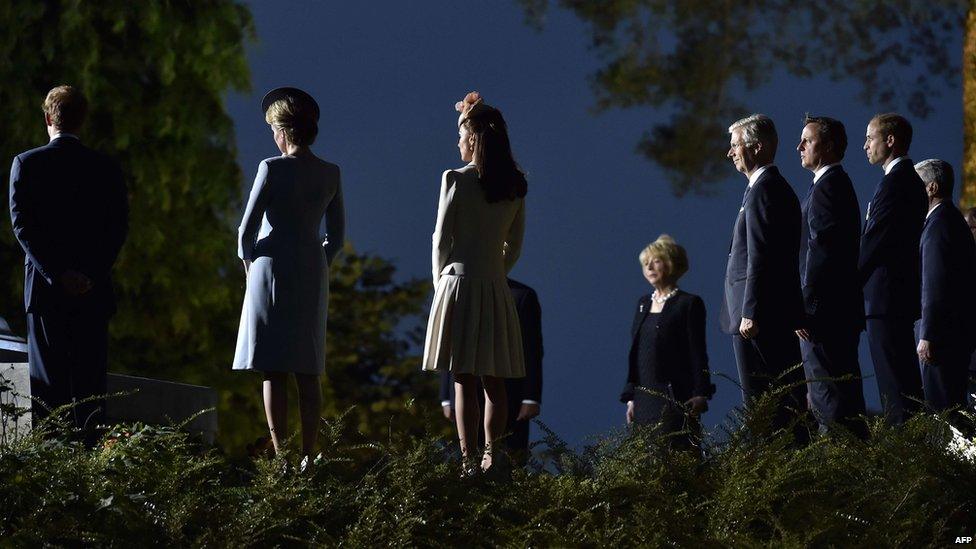
Meanwhile, the Duke and Duchess of Cambridge, Prime Minister David Cameron and Prince Harry were among the dignitaries to attend a twilight ceremony at the St Symphorien Military cemetery, near Mons, Belgium.
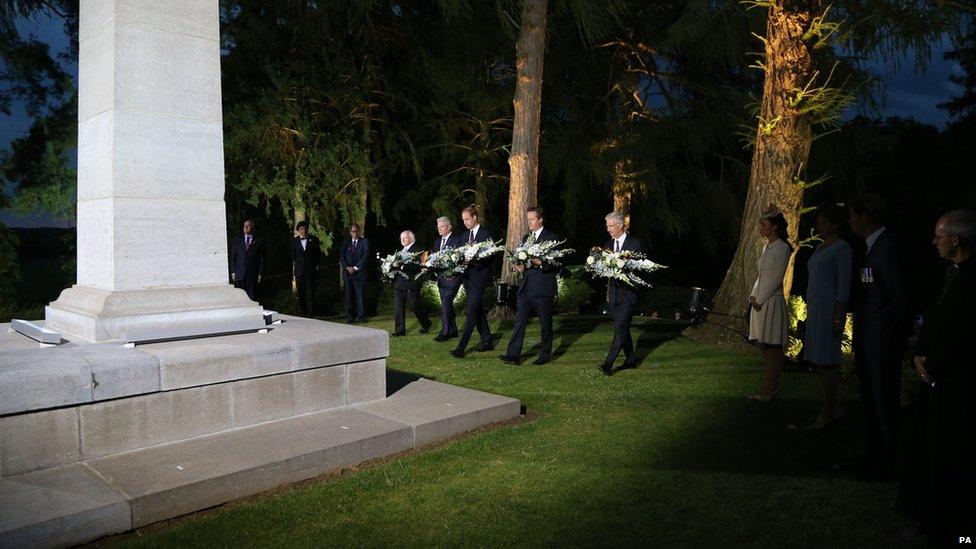
Dignitaries, including Prince William and Mr Cameron, laid loose flowers as a mark of respect at the ceremony - rather than wreaths or poppies, which became a tradition after the end of World War One.
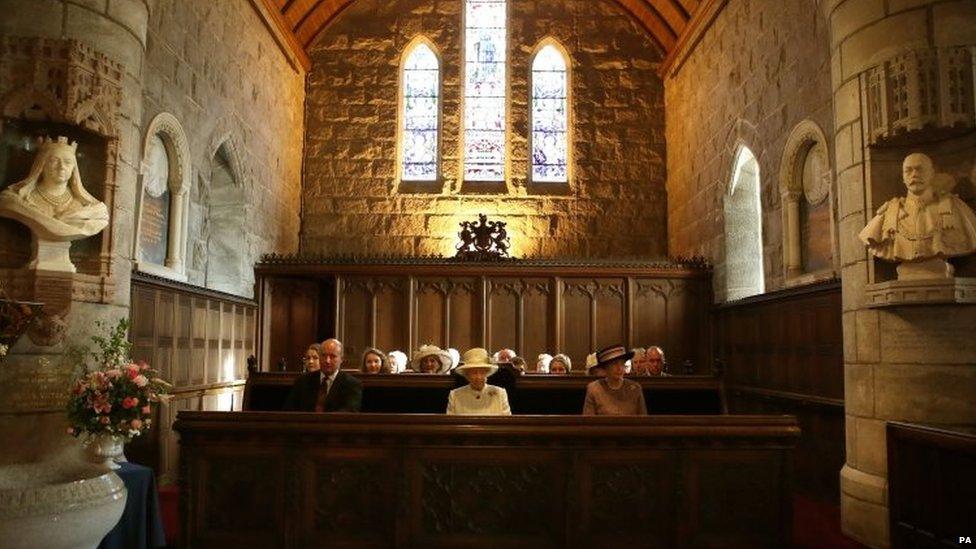
The Queen was also among those to pay their respects in Scotland when she attended a memorial service at Crathie Kirk in Aberdeenshire.

Crowds gathered at the town hall in Mons to greet the Duke and Duchess of Cambridge and Prince Harry as they appeared on the balcony.
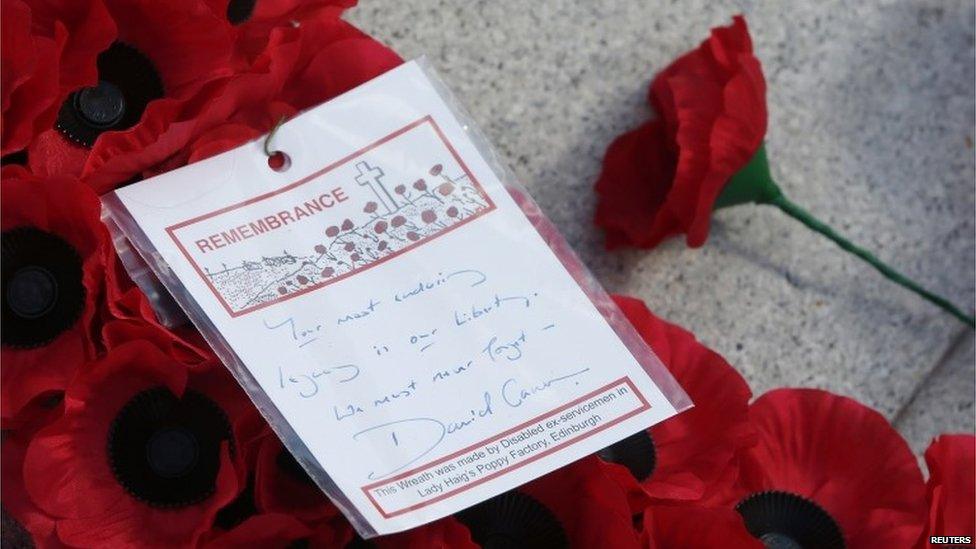
A message on a wreath laid by PM Mr Cameron in Glasgow earlier read: "Your most enduring legacy is our liberty. We must never forget."
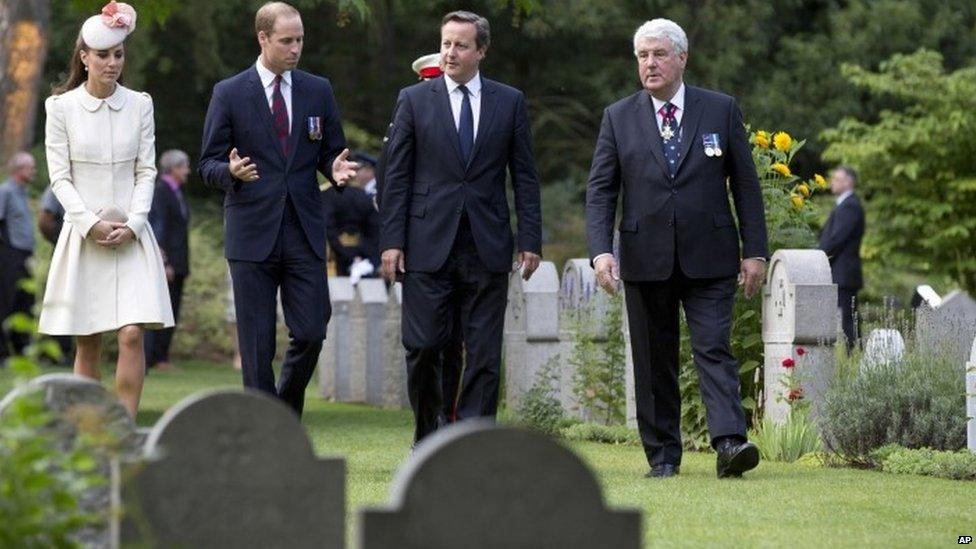
The royal couple also made a private visit to see the graves of UK, Commonwealth and German soldiers at St Symphorien Military Cemetery in Mons.

Members of re-enactment group the Great War Society were showered by poppies in a ceremony at the Tank Museum in Bovington, Dorset, on Monday.
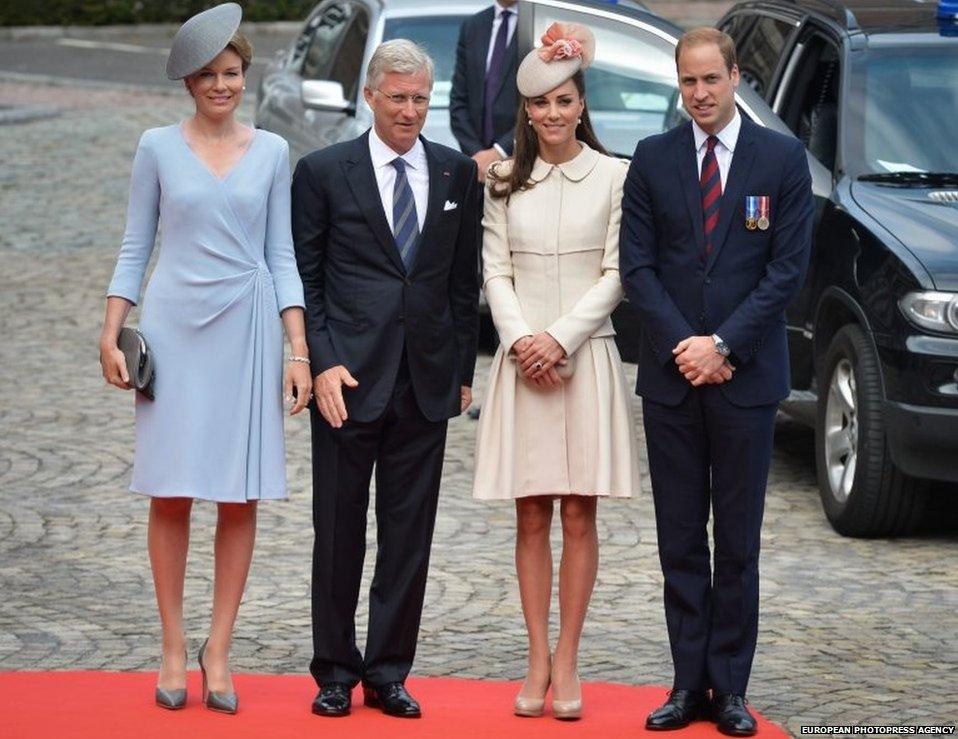
The King and Queen of Belgium met the Duke and Duchess of Cambridge at a ceremony in Liege where commemorations have been taking place.
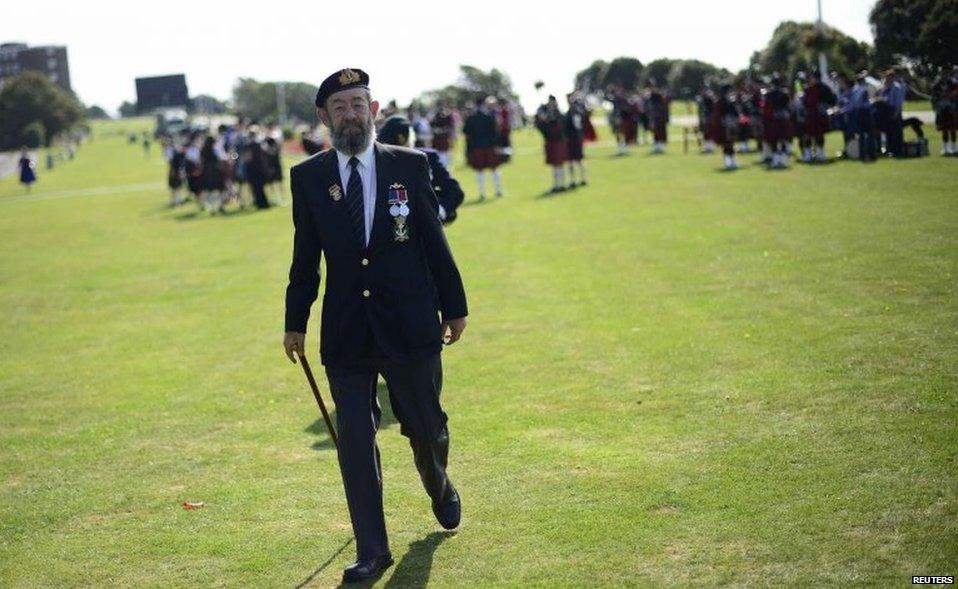
A military veteran was one of many attending events in Folkestone, Kent, where Prince Harry unveiled a memorial arch to honour the fallen.

Speaking in Liege, Prince William described the Belgian people's resistance "as gallant as their suffering was great".
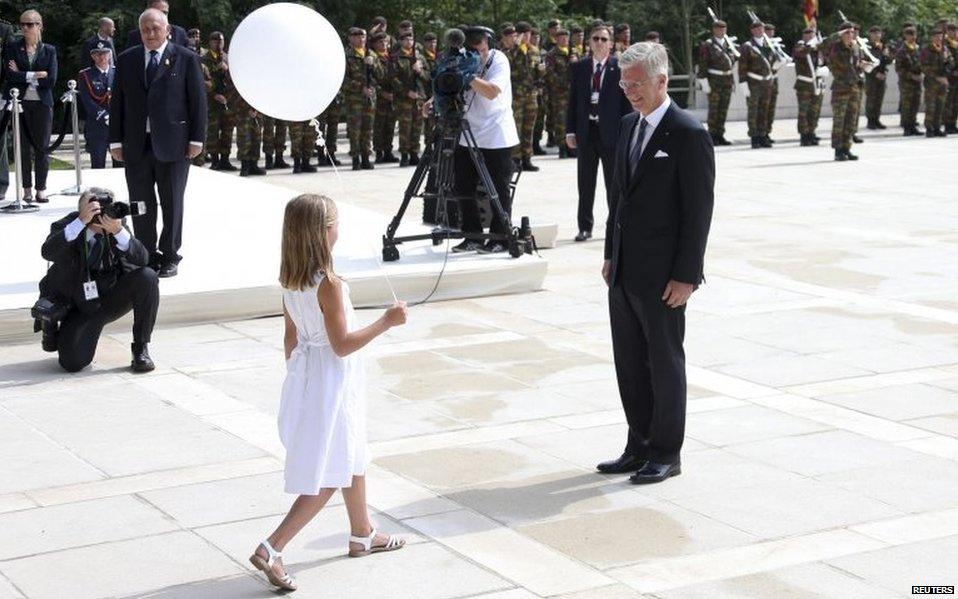
King Philippe of Belgium was met by a girl dressed in white in Liege.
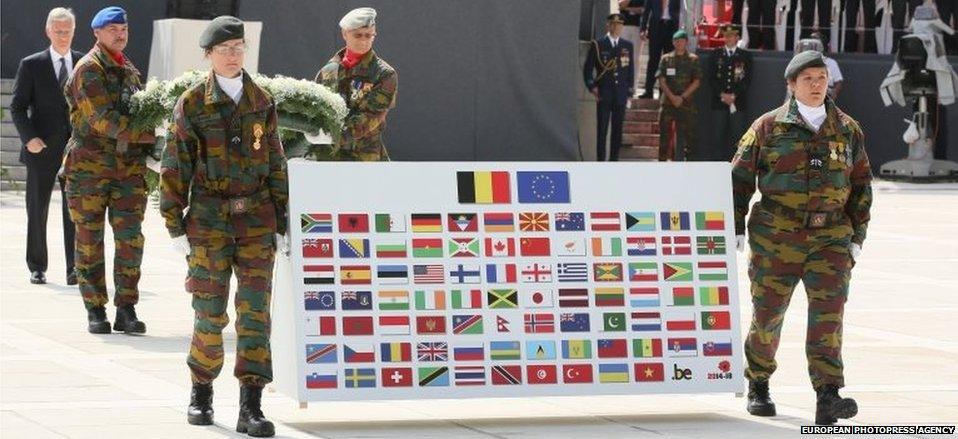
King Philippe of Belgium (far left) prior to laying a wreath in Liege, which was once seen as the most fortified spot in Europe.

The Duke and Duchess of Cambridge spoke to French President Francois Hollande at the ceremony.

Bands from Germany, dressed in grey, and Belgium (right) performed for dignitaries attending the Liege event.
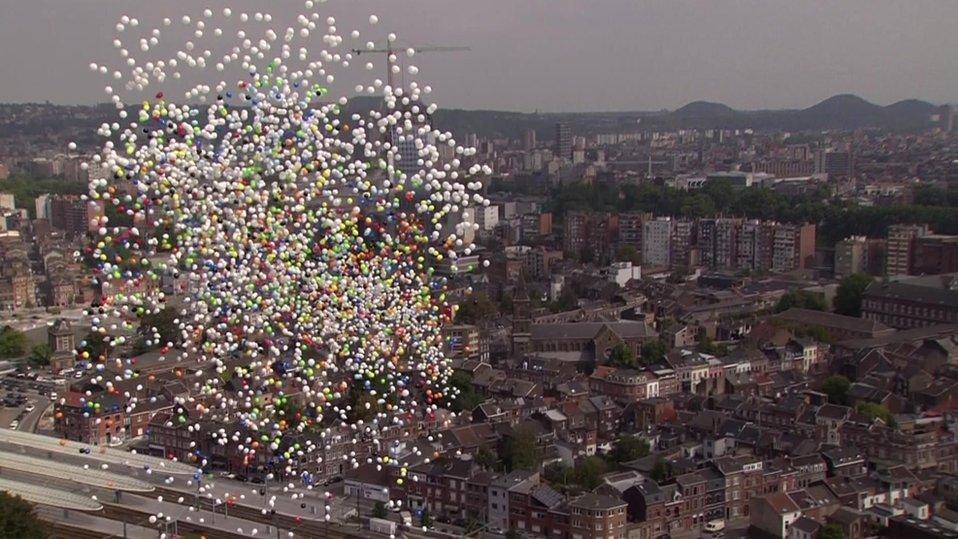
Thousands of balloons were released over the Belgian city as the ceremony drew to a close.
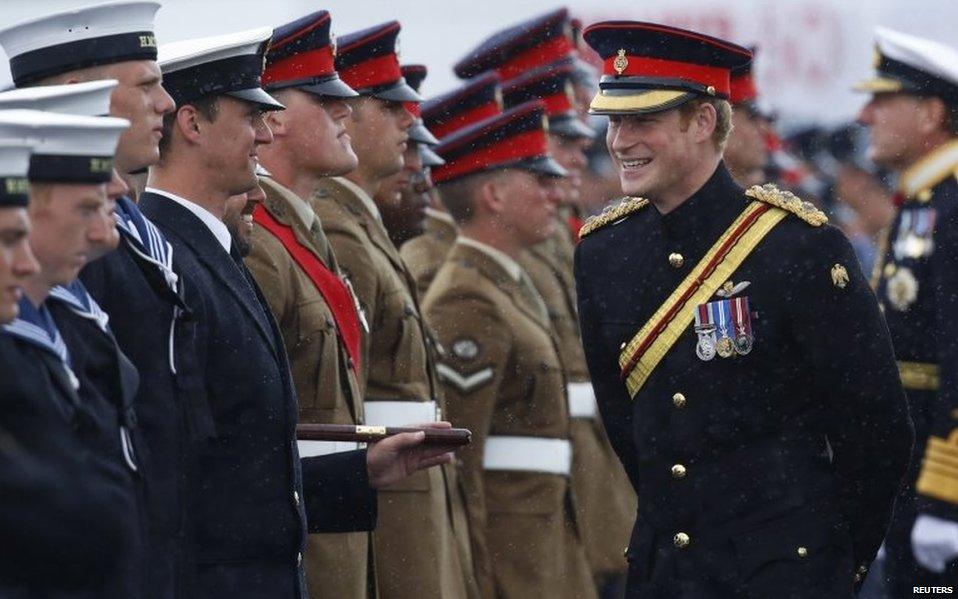
Prince Harry laid a wreath and met members of the armed forces during a visit to Folkestone, Kent.

A woman sheltered under her umbrella ahead of those Kent commemorations.
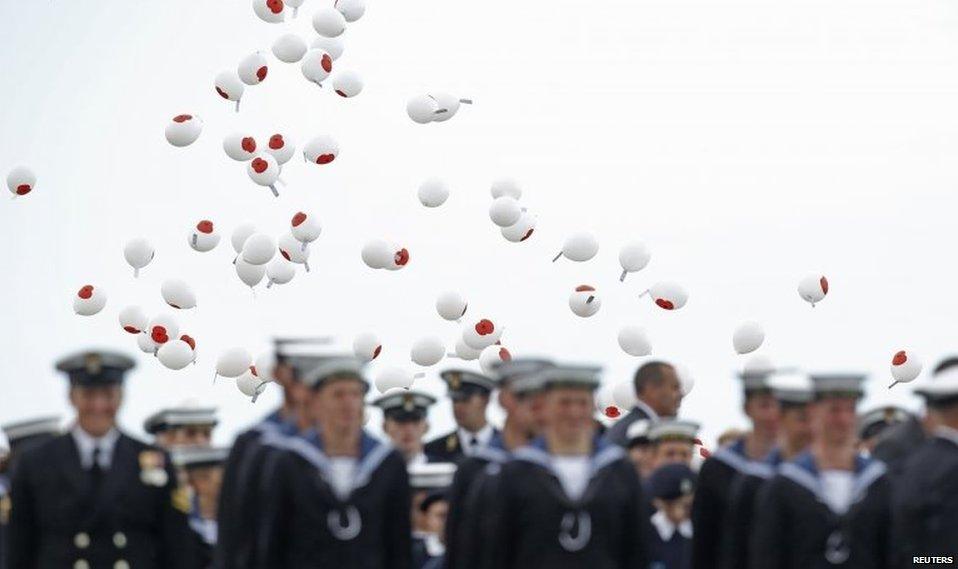
Also in Folkestone, balloons decorated with the emblem of a poppy and carrying the name of a fallen soldier were released into the sky.
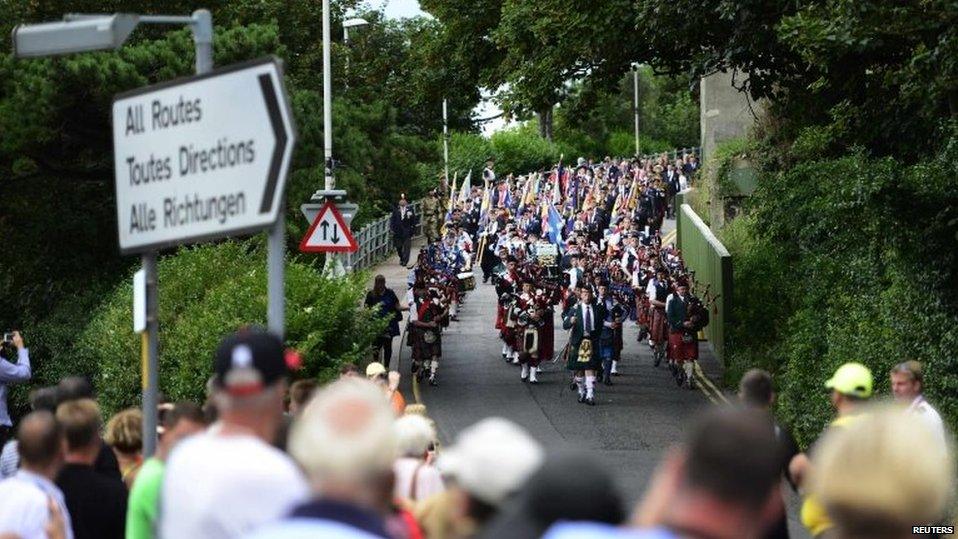
The town also saw veterans and soldiers parade past a sign written in English, French and German.
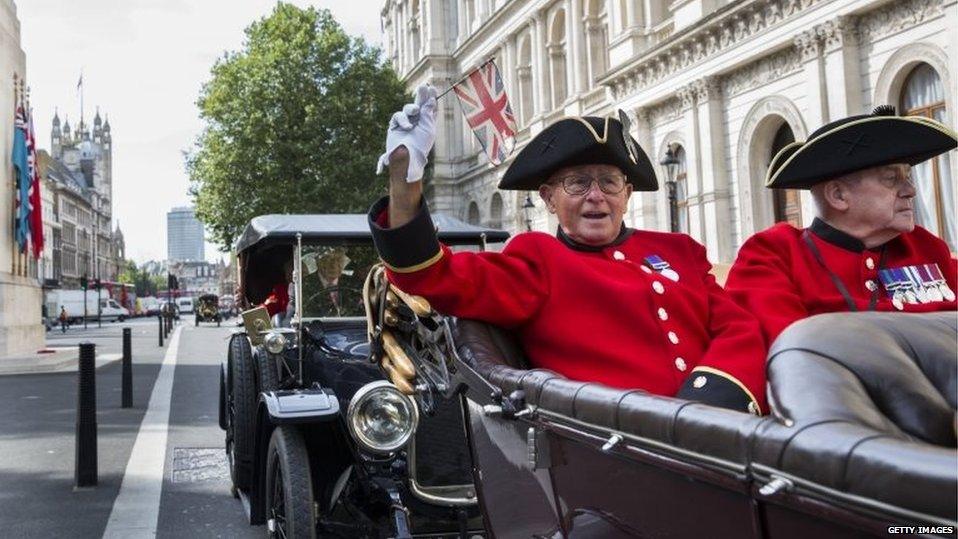
Chelsea Pensioners have also been commemorating the anniversary with a central London parade.
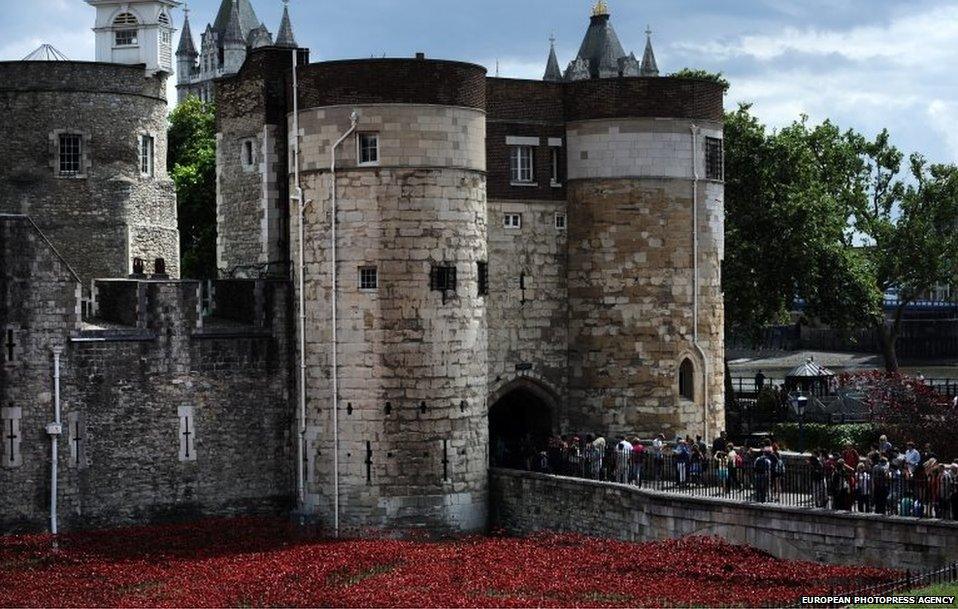
The Tower of London moat has been turned red by 888,246 ceramic poppies, one for every British and Commonwealth soldier killed during the conflict.
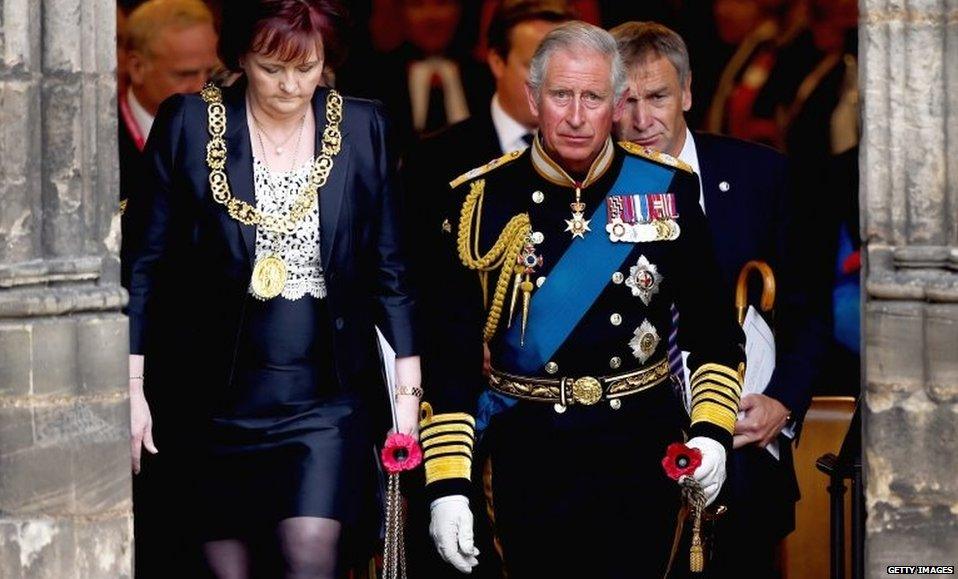
Prince Charles attended Glasgow Cathedral for a service - alongside many Commonwealth figures - where he signed a commemoration book.
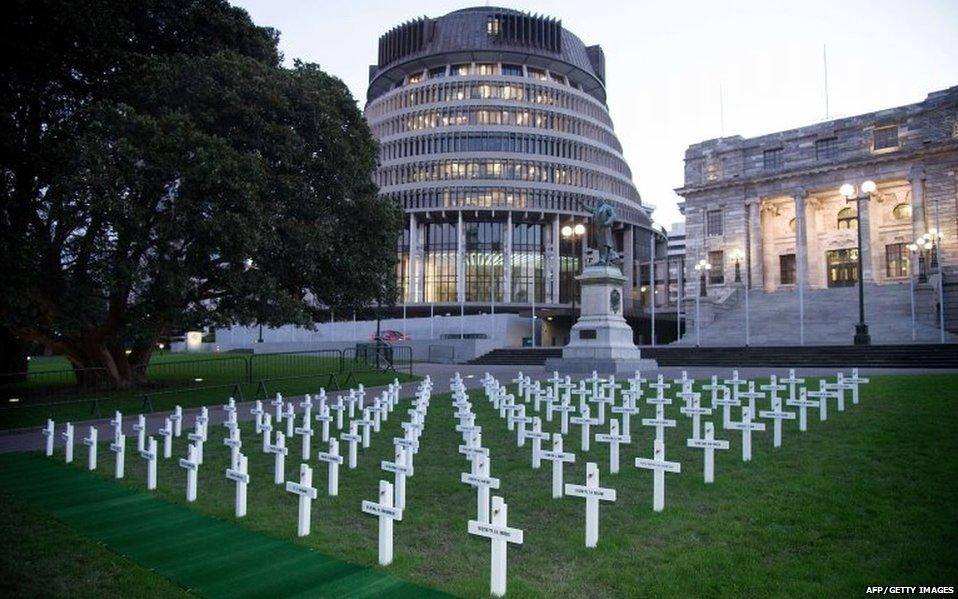
Elsewhere, 100 white crosses have been placed outside New Zealand's parliament building in Wellington, in memory of the more than 18,000 New Zealand troops killed in WW1.
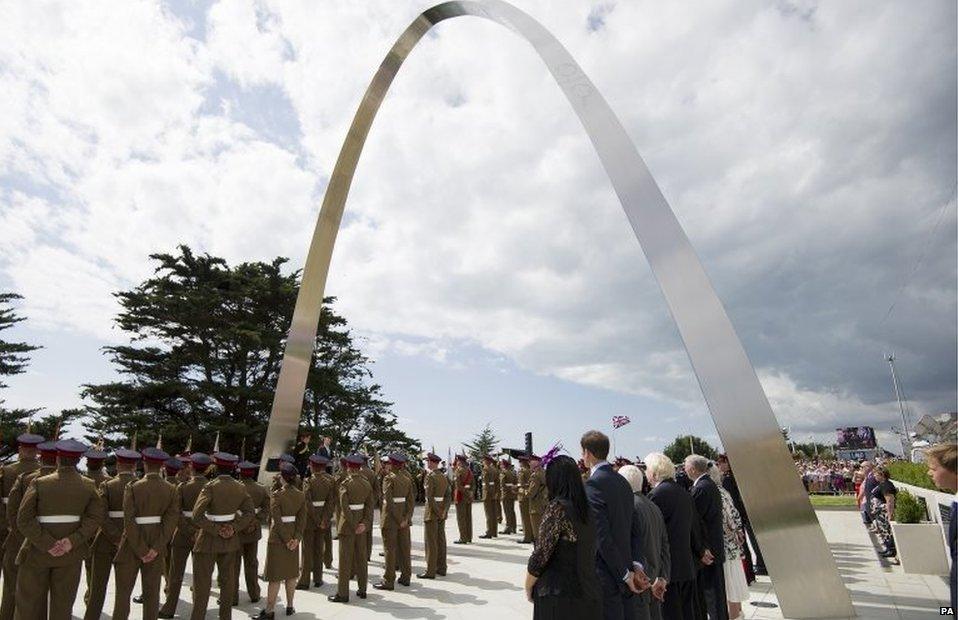
A memorial archway in Folkestone, unveiled by Prince Harry, marks the role the Kent port town played in World War One. It became known as the gateway to the trenches as the location millions of soldiers began their voyage to France.
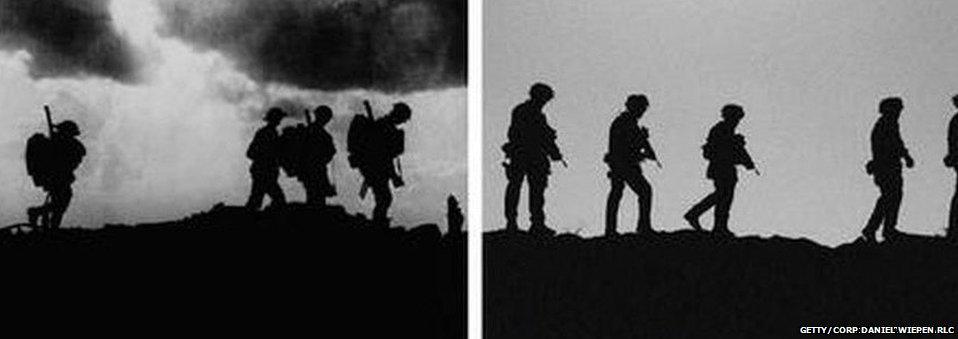
On its Twitter feed, external, the British Army published a photo of The Queen's Dragoon Guards in Afghanistan (right) recreating an image of soldiers moving up the trenches in 1914.